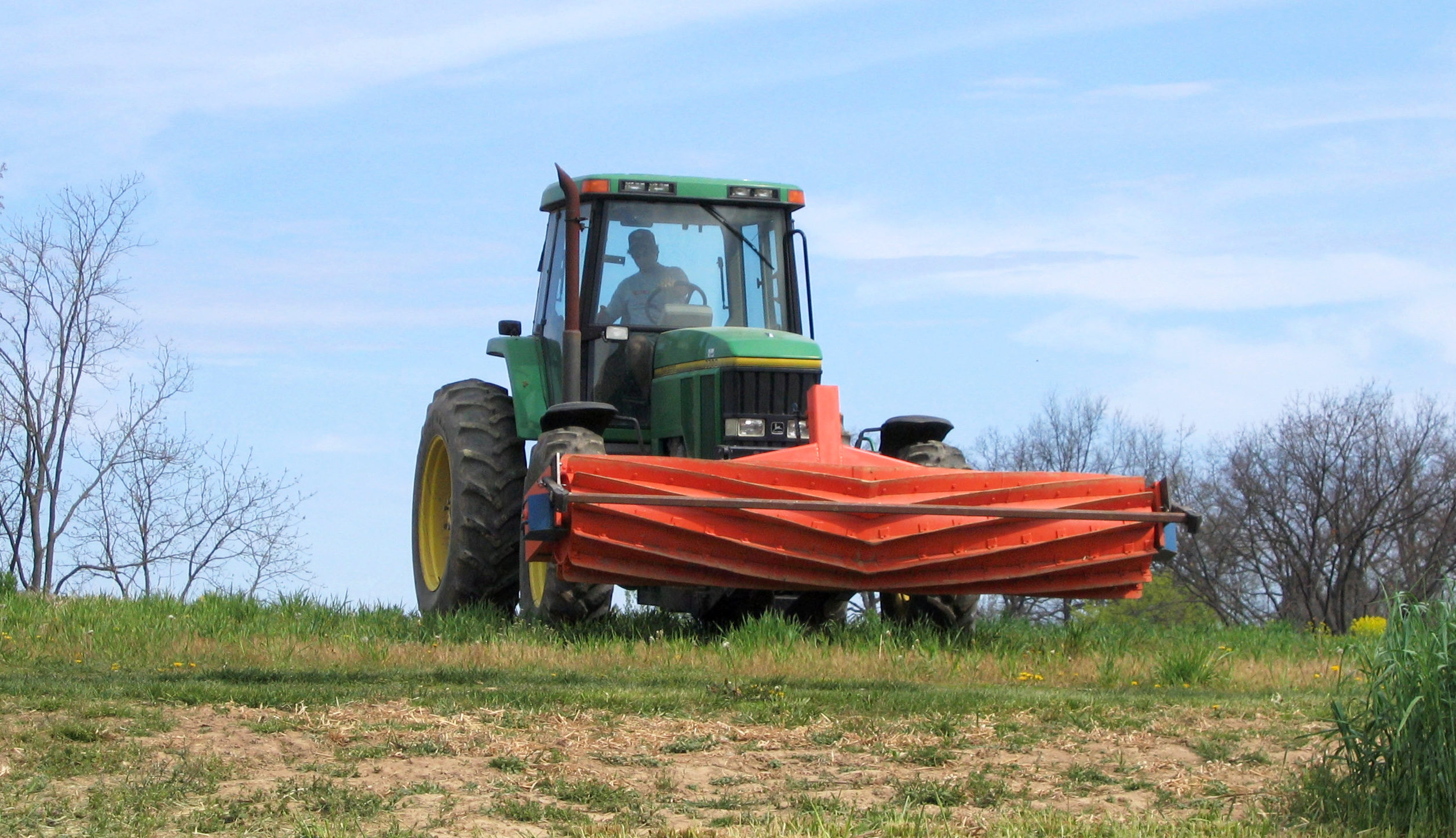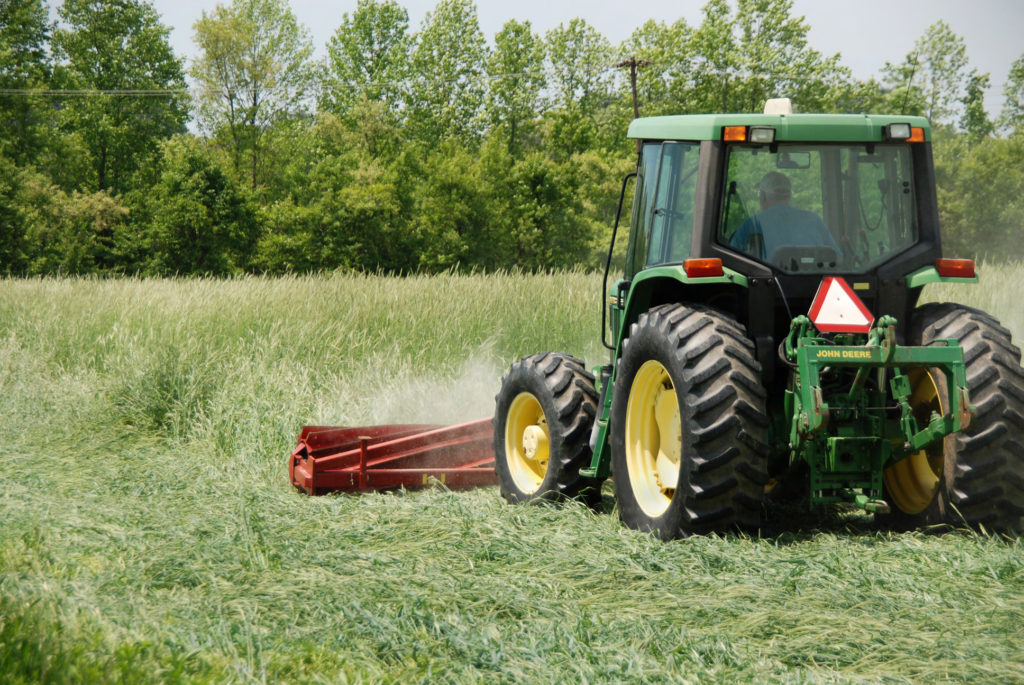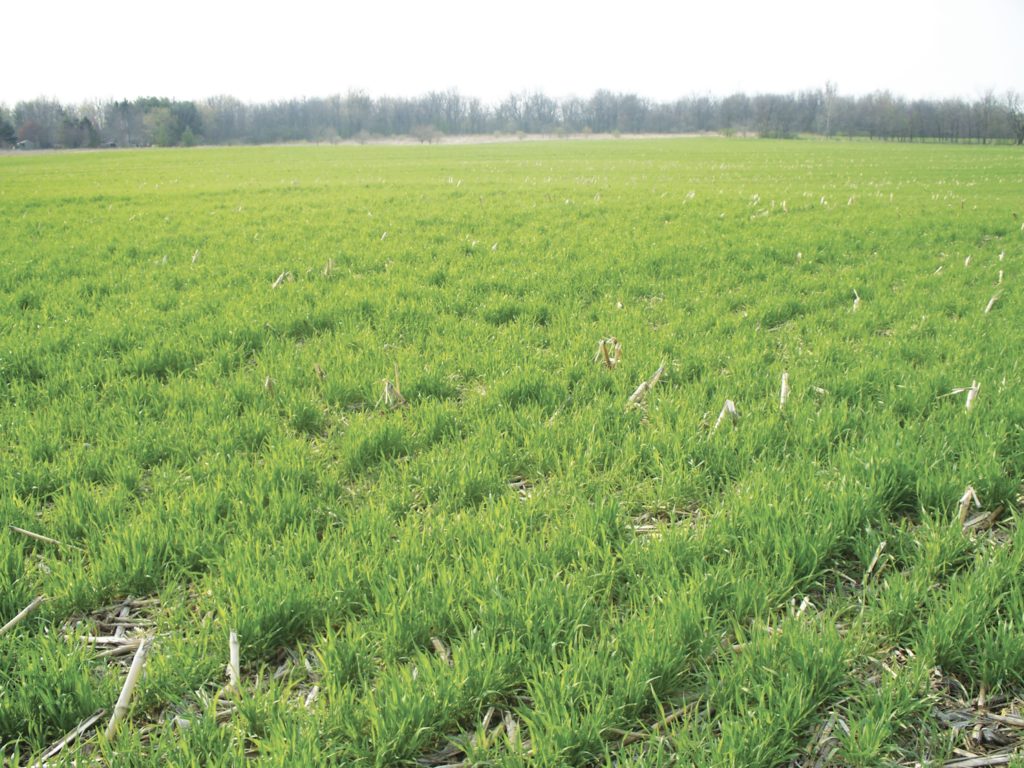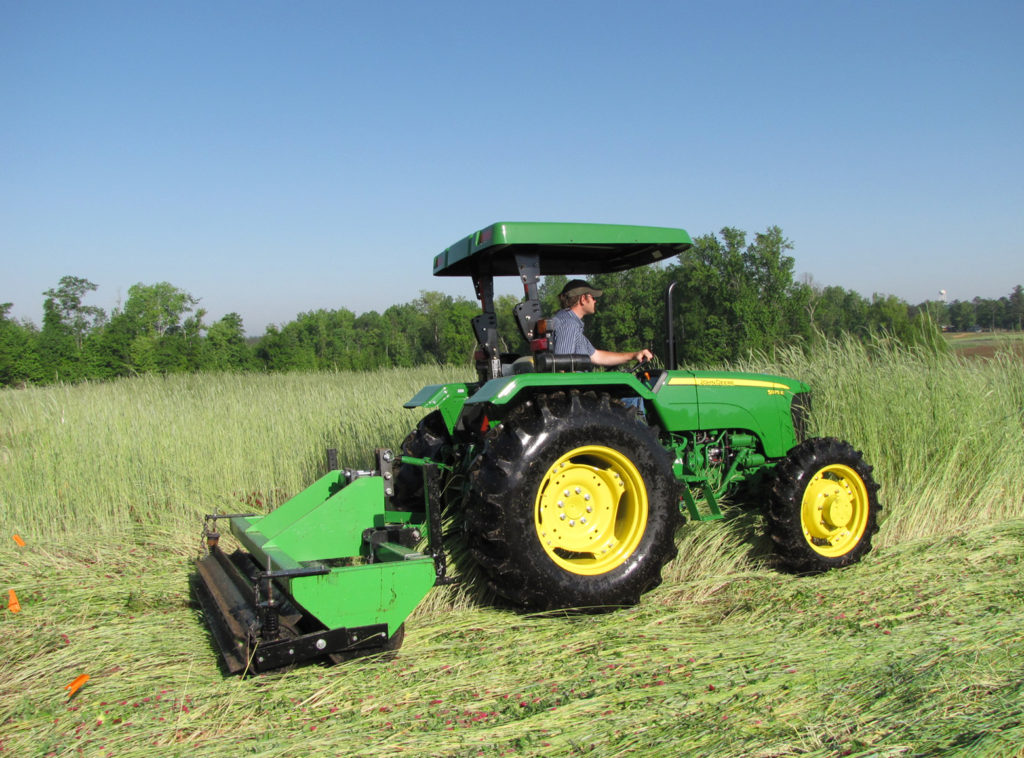
Dec 21, 2021
Killing time for cover crops? Late-planted rye won’t delay crimping.
Cereal rye as an overwinter cover crop poses a special challenge for organic vegetable growers. Unlike conventional growers who manage cereal rye in the spring with glyphosate, organic growers who no-till or strip-till must crimp the rye. Crimping must be done at anthesis when the rye enters the reproductive stage and its stems stiffen.
“The time of crimping is extremely important for organic growers,” said Ajay Nair, associate professor in Iowa State University’s (ISU) horticulture department. “If you try to crimp it before the anthesis stage, it won’t die and will spring back up again.”
“Organic growers are at the mercy of cereal rye waiting for it to get to anthesis,” said Kristine Lang, graduate student and researcher in ISU’s horticulture department. Organic growers can’t plant their vegetable crop until the rye has been killed. They can’t kill the rye until it reaches the reproductive stage and they see the pollen shedding from the grain head.

The roller-crimper is a tractor-mounted implement that has long, chevron-shaped blades arranged on a cylinder that crimps and crushes the rye stalks. When the rye stalks become brittle at anthesis, the crimper is able to crimp the stalk in enough places to kill the plant by interrupting water translocation. If growers crimp too early, the stem is too pliable and bends rather than breaks.
This danger of crimping too early leads to questions about whether picking the right cereal rye cultivar and planting it at the right time in the fall can make anthesis come earlier.
A recent ISU study said no. The study looked at five cultivars with mid-September and mid-October planting dates. Regardless of the planting date, all of the cultivars reached anthesis within three to four days of each other in mid-May.
Spring conditions are usually the determining factors on when rye flowers. “As long as the plant has long-day conditions in the spring, which are 12 to 14 hours of sunlight, and temperatures of at least 55 degrees, it will grow and flower,” Nair said.
The planting dates in the study were based on vegetable production practices. Mid-September is the ideal time to seed rye, but vegetable growers may still have crops in the field into October.
The key to planting in October is having adequate soil moisture. “You don’t have to plant early to successfully establish rye, but you must have moisture,” Nair said. “Rye establishment is dictated by the weather.”
“September had good planting conditions in both years of the study, but October was dry,” Lang said. “We had to irrigate, which is unrealistic for most growers to consider.”
The study evaluated the cereal ryes Aroostook, Elbon, Prima, Wheeler and Wrens Abruzzi.

Aroostook is a cold-hardy cultivar from Maine. Elbon is from Oklahoma and was developed under drier conditions. Prima is an ergot-resistant cereal rye from Canada. It wasn’t in the study’s second year because of seed unavailability. Wheeler rye originated in Michigan and is commonly available. Wrens Abruzzi originated in Georgia and is well-adapted to the southeastern U.S.
The two planting dates did not produce a significant difference in cereal rye biomass the next spring although there were some varietal differences.
Biomass ranged from an average of 9,387 pounds per acre for Aroostook to 7,647 pounds per acre for Prima, although the differences were not viewed as statistically significant.

The cultivars did separate into two statistically significant groups in the carbon-to-nitrogen ratio (C:N) of their biomasses.
Aroostook and Wrens Abruzzi both had an average C:N ratio of 58:1 and Elbon 57:1. Prima had an average C:N ratio of 49:1 and Wheeler 47:1. “The C:N ratio dictates how quickly or slowly the biomass will degrade,” Nair said. The C:N ratio didn’t vary significantly with planting date.
A C:N ratio of 25:1 is ideal for microbial activity although C:N ratio ranges between 40:1 and to 50:1 are still good.
“With a higher C:N ratio, you’re going to see a slowdown in the mulch breakdown,” Lang said. “If you’re growing cantaloupe, watermelon, squash or even cucumbers – anything that lays on the ground – you may want a higher C:N ratio for slower mulch decomposition.
“Start thinking about your cereal rye cultivars. A lot of growers buy VNS (Variety Not Stated) seed and don’t know what variety they’re getting.”
A cereal rye cover crop provides overwinter erosion protection, adds soil organic matter, is habitat for beneficial insects, and can outcompete germinating weeds. It also has a flexible planting date in the fall.
“You can miss a mid-September planting date as long as there is adequate soil moisture,” Nair said.
“Cover crop management is an important part of your system,” Lang said. “Consider the cultivar of your cereal rye cover crop just as important as the cultivar of watermelon, tomatoes or any other vegetable crop you’d plant.”






